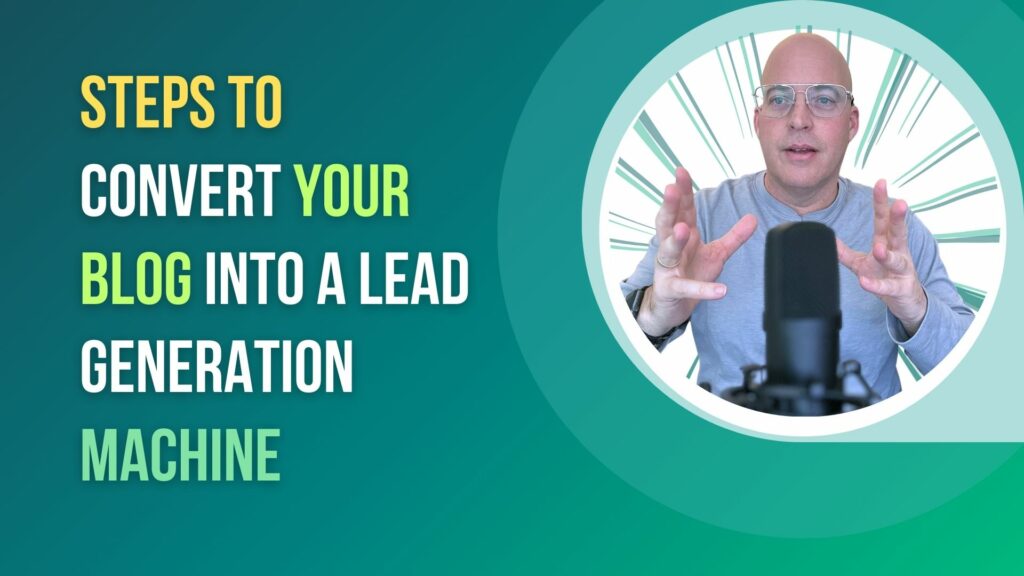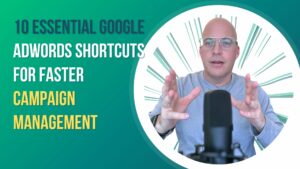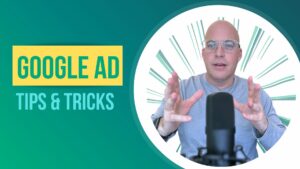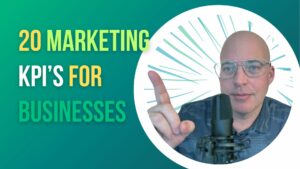Turning your blogs into a lead generation machine involves attracting potential customers. It also persuades them to give you their contact details so you can nurture them into becoming customers. Think of it as casting a fishing net into a lake. You aim to catch as many fish as possible, but you’ll first need to lure them in with the right bait.
The Role of a Blog in Lead Generation
Blogs aren’t just for sharing your thoughts or publishing articles; they can be powerful tools for generating leads. When properly optimized, a blog becomes a resource hub that educates potential customers and entices them to take further action. This action—be it filling out a form, subscribing to a newsletter, or scheduling a call—converts them from visitors to leads.
Understand Your Audience
Understanding your audience is the bedrock upon which effective lead generation is built. By pinpointing your target demographic, conducting thorough market research, and crafting audience personas, you set the stage for a blog that truly resonates with potential leads.
Pinpoint Your Target Demographic
The initial step is to define who your target audience is. This involves examining your product or service to discern its most likely users. Analyzing competitor blogs can offer valuable insights into who you should be targeting. By gathering data on specific demographics such as age, gender, location, and occupation, you build a robust framework for your subsequent strategies.
Dig into Market Research
Upon clearly identifying your target audience, the next phase involves deep market research. This is the “scouting mission” where you gather intelligence on your audience’s preferences, pain points, and sought-after solutions. Choosing the appropriate research methods—such as online surveys or focus groups—is key. The questions you formulate should aim to illuminate your target demographic’s specific characteristics and needs. The analyzed data from this research stage will be invaluable input for tailoring your blog’s content and lead capture mechanisms.
Craft Audience Personas
With a deep understanding of your audience and what they are looking for, creating audience personas becomes the natural next step. These personas serve as fictional yet data-driven sketches of your ideal customers. They aggregate your audience’s diverse needs and characteristics into manageable profiles, complete with names and background stories. For instance, if you’re running a tech blog, you might have personas like “Startup Steve,” who is interested in entrepreneurship, or “Developer Dana,” who is into coding tutorials.
Optimize Blog Content
Optimizing your blog content is like fine-tuning a musical instrument; the better it’s set up, the more beautiful the output. This process involves three pivotal steps: researching keywords, creating high-quality content, and implementing on-page SEO. When combined effectively, these elements attract, engage, and convert your blog’s audience into valuable leads.
Mine for Keywords
The primary objective of keyword research is to unearth the terms and phrases that your target audience employs when seeking information via search engines. Tools like Google Keyword Planner or Ahrefs offer valuable insights into keywords that are relevant to your field. You can prioritize which keywords to include in your blog posts by focusing on metrics like search volume and competition level. The objective is to harmonize your content with the queries your audience is already searching for, thereby enhancing your blog’s visibility and reach.
Craft Content That Resonates
After your keywords are sorted, the spotlight turns to creating content that resonates with your audience. Just as a master chef selects the finest ingredients for a dish, the quality of your content depends on meticulous research, lucid writing, and a deep understanding of your audience’s needs. Content should be more than just readable; it should provide actionable insights, validated data, and compelling narratives that enrich the reader’s experience. Adding visual elements like images or videos can further enhance engagement. Think of your blog as a library: just as libraries possess catalog systems to ease searching for specific books, high-quality content in your blog acts as those must-read books that people return to repeatedly.
Fortify with On-Page SEO Elements
Finally, on-page SEO is the technical garnish that brings out the full flavor of your blog. This involves using your researched keywords in strategic locations like title tags and meta descriptions, employing header tags to better structure your content, and optimizing visual elements like images by adding appropriate alt text. Further considerations include internal and external linking strategies to reinforce your blog’s credibility and user experience, site speed and mobile optimization to ensure that the content is accessible across all devices.
Engaging Headlines and CTAs
Mastering the art of crafting engaging headlines and effective Calls-to-Action (CTAs) is akin to becoming a skilled fisherman: your headline serves as the bait that attracts the fish, while your CTA is the hook that reels them in. Popular headline formulas, such as “How-to” guides and listicles, function as magnetic invitations, drawing the reader into your blog post. Selecting the right headline formula depends on your blog post’s core message, and it’s advisable to incorporate relevant keywords to boost SEO. Think of the headline as a movie trailer, providing a tantalizing glimpse that encourages the audience to invest their time in the full feature.
Transitioning to CTAs, these are the pivotal links that usher the reader from passive consumption to active engagement, whether signing up for a newsletter or purchasing. Effective CTAs are generally concise, clear in their instruction, and contain elements of urgency or exclusivity, like “Limited Time Offer” or “Get Exclusive Tips.” Periodic A/B testing of different CTAs can identify which phrasing or design yields the highest conversion rates.
Add Value Through Additional Content
Infographics: Infographics serve as a visually compelling way to present complex data or processes in an easily digestible format. They can capture attention quickly and are highly shareable, broadening your reach.
E-books and Whitepapers: These long-form content pieces offer deeper insights into specific topics, establishing your brand as a thought leader. They are excellent tools for capturing leads, as readers often provide contact information in exchange for these valuable resources.
Webinars: Offering real-time, interactive experiences, webinars can significantly boost engagement. They position you as an expert in your field and provide an opportunity for immediate lead capture through registration forms.
Implement Lead Capture Mechanisms
Signup Forms: Think of signup forms as the fishing nets of your blog; they’re strategically positioned to capture leads as readers navigate your content. Well-designed forms ask for just enough information—often just an email address—to initiate the lead nurturing process without overwhelming the visitor.
Chatbots: Chatbots act as your blog’s virtual customer service agents, engaging with visitors in real-time to answer questions or guide them through a predetermined funnel. These bots can be programmed to capture lead information while providing immediate value, similar to a helpful store assistant who can multitask.
Pop-ups and Slide-ins: These are the digital equivalents of sales representatives gently approaching you with an offer while browsing in a physical store. Pop-ups and slide-ins appear based on user behavior, such as time spent on the site or scroll depth, providing timely prompts for action like newsletter subscriptions or limited-time offers.
Analytics and Data Measurement
Tools for Tracking Performance
Selecting the right analytics tools is akin to choosing a GPS for a long journey. Options like Google Analytics, HubSpot, and Mixpanel allow you to monitor user behavior, track conversion rates, and gauge overall blog performance. These tools provide the roadmap that shows where you’re succeeding and where course corrections are needed.
Metrics to Monitor
Metrics are the yardsticks that help you measure the success of your blog in concrete terms. Key performance indicators (KPIs) such as page views, bounce rate, and conversion rates provide valuable insights into how effectively your blog functions as a lead-generation machine.
A/B Testing
A/B testing is the scientific method applied to your marketing strategy, allowing you to compare two versions of a web page or other content element to determine which performs better. This approach allows small, incremental changes to be tested and analyzed for effectiveness, serving as a refining mechanism for your blog.
You’re installing a feedback loop into your blog by incorporating these analytics and data measurement elements. This enables constant refinement and fine-tuning, turning your blog into an ever-more effective lead-generation tool.
Leverage Social Media
Content Promotion
Leveraging social media for content promotion is like having multiple loudspeakers at strategic locations. Platforms like Twitter, Facebook, and LinkedIn can amplify the reach of your blog posts, attracting more potential leads. Share snippets, visual highlights, and key takeaways from your blog to pique interest and drive traffic back to the full post.
Engage with Followers
Engagement on social media platforms serves as an informal yet effective channel to build relationships with your audience. Responding to comments, sharing user-generated content, and actively participating in conversations can create a sense of community and increase brand loyalty.
Use Paid Advertising Strategically
Paid social media advertising functions like a booster rocket, propelling your blog content into a wider orbit of potential leads. Facebook Ads, LinkedIn Sponsored Content, and Twitter Promoted Tweets offer precise targeting options. This allows you to reach niche audiences more likely to convert.
Email Marketing
Build an Email List
An email list functions as your blog’s savings account. It’s a reservoir of potential leads you can reach out to directly. Utilize your blog and social media channels to encourage sign-ups, offering valuable incentives like e-books or exclusive content as bait.
Segment the Email List
Segmenting your email list is akin to organizing a library; it ensures that the right content reaches the right audience. Criteria for segmentation could include user behavior, demographics, or past engagement. All aimed at making your email campaigns more personalized and effective.
Email Campaign Best Practices
Implementing best practices in email campaigns ensures that your messages reach the inbox and resonate with the recipient. This includes crafting compelling subject lines, personalizing email content, and using A/B tests to fine-tune your approach
Regular Updates and Maintenance
Keep Content Fresh
Continually updating your content is akin to restocking shelves in a grocery store. Stale items must be replaced to maintain customer interest. Fresh content engages your audience and helps maintain or improve your blog’s SEO rankings.
Update SEO Strategies
SEO is not a set-it-and-forget-it endeavor. Search algorithms constantly evolve, making it necessary to revisit your SEO strategies periodically. Think of this as recalibrating a compass. It ensures you continue moving in the direction that yields the most traffic and leads.
Check and Update Lead Capture Forms
Your lead capture forms should undergo regular checks and updates to ensure they function as intended. This is similar to regular health check-ups. Detecting and fixing minor issues before they escalate can save time and resources in the long run.
Sites to Lead Generation
Key steps in transforming your blog into a lead-generation powerhouse cannot be overlooked. Additional strategies like value-added content, strategic use of social media, and targeted email marketing round out a holistic approach. Think of your blog as a finely-tuned orchestra where each instrument plays a role in creating a harmonious tune. With the strategic implementation of these steps, your blog has the potential to be more than just an information platform. It can be a dynamic engine that drives leads and contributes to business growth. Now’s the time to act and turn your blog into the lead-generating machine it has the potential to be.








